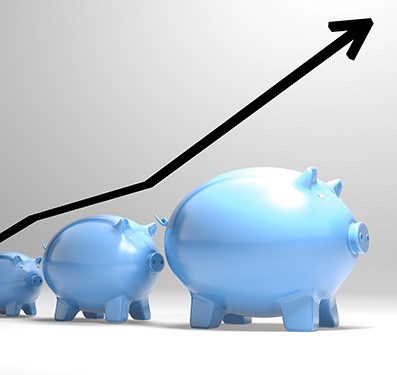Don’t Let a Slow Economy Slow Down Your Self-Directed Retirement Savings
Published on November 24, 2015

A Slow Economy
An article in Investment News has some sobering news forecasts for investors; it reported that some economists are predicting a period of slow growth for the foreseeable future. The U.S. Commerce Department estimates a decrease in gross domestic product in the third quarter as compared to the second quarter (by a lot—1.5% vs. 3.9% respectively). Goldman Sachs gave an even grumpier estimate of only 1%.
These figures are tied to the economic slowdown in China which is one of our country’s biggest export customers (this slows our productivity growth); Japan and Europe are also suffering weak economies which impact the U.S. in this age of global economy.
Our nation’s relatively slow population growth is also a contributing factor and it’s not just the U.S.; China and Japan also saw a drop in “replacement rate” or number of births per woman.
Some statistics cited were:
- The real GDP growth rate in the U.S. has been below par since 2011, when it was 1.6%.
- It was only 2.3% in 2012, 2.2% in 2013 and 2.4% in 2014.
- It did not top 2.4% until the second quarter of this year, when it shot up to 3.9% after registering only 0.6% in the first quarter.
- The average growth rate since 1948 has been 3.23% per year. Many economists expect the economy to struggle to top 2.5% a year for the next few years, especially if the Federal Reserve raises interest rates bit by bit over those years (this tactic generally serves to slow the rate of economic growth).
Quick economics lesson
If this is true, then investors will see significant impact on their investment portfolios if they are heavy in traditional assets. That’s because slow economic growth is correlated with slow stock market growth because corporate earnings can’t grow faster than the economy. This also negatively affects interest rates—bad news for retirees or those saving for retirement through traditional investment classes. After all, low rates and low equity returns can’t keep pace with living expenses or cost of living increases. This could also have a negative impact on Social Security benefits (no increase). And with Medicare contributions threatening to increase, it could all spell trouble for retirement nest eggs in the next few years.
Get on a retirement savings fast track
Don’t sit back and wait for your account balance to tumble or your investments to stall in neutral (or go in reverse!). Take control of your future and prepare for an alternative investment strategy with a self-directed retirement account. You can include many nontraditional investments that may not be as susceptible to market downturns or what’s happening in China.
Rather than lower your expectations about investment returns or cut back on lifestyle choices, consider opening a self-directed IRA and investing in real estate, commodities, precious metals and a slew of alternative assets these plans allow. Are you already investing in these assets outside of your existing retirement plan? If so, you’re well on your way to becoming a self-directed investor.
Determine your nontraditional investments that you want to include in your self-directed IRA, research them thoroughly, then check out our Starter Kits to see how easy it is to open a new account … and build a more eclectic retirement portfolio that isn’t dependent on what’s happening in the stock market, T-bills or mutual funds.
Have a question about self-direction as a retirement wealth-building strategy? Need some clarification about whether a particular asset is allowed or how to make a transaction?
Learn the Secrets of a Self-Directed IRA Your Broker Doesn’t Want You To Know


